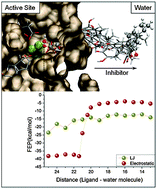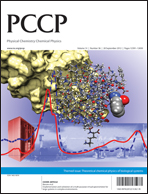Computational methods for accurately calculating the binding affinity of a ligand for a protein play a pivotal role in rational drug design. We herein present a theoretical study of the binding of five different ligands to one of the proteins responsible for the human immunodeficiency virus type 1 (HIV-1) cycle replication; the HIV-1 reverse transcriptase (RT). Two types of approaches are used based on molecular dynamics (MD) simulations within hybrid QM/MM potentials: the alchemical free energy perturbation method, FEP, and the pathway method, in which the ligand is physically pulled away from the binding site, thus rendering a potential of mean force (PMF) for the binding process. Our comparative analysis stresses their advantages and disadvantages and, although the results are not in quantitative agreement, both methods are capable of distinguishing the most and the less potent inhibitors of HIV-1 RT activity on an RNase H site. The methods can then be used to select the proper scaffold to design new drugs. A deeper analysis of these inhibitors through molecular electrostatic potential (MEP) and calculation of the binding contribution of the individual residues shows that, in a rational design, apart from the strong interactions established with the two magnesium cations present in the RNase H site, it is important to take into account interactions with His539 and with those residues that are anchoring the metals; Asp443, Glu478, Asp498 and Asp549. The MEPs of the active site of the protein and the different ligands show a better complementarity in those inhibitors that present higher binding energies, but there are still possibilities of improving the favourable interactions and decreasing those that are repulsive in order to design compounds with higher inhibitory activity.

You have access to this article
 Please wait while we load your content...
Something went wrong. Try again?
Please wait while we load your content...
Something went wrong. Try again?


 Please wait while we load your content...
Please wait while we load your content...